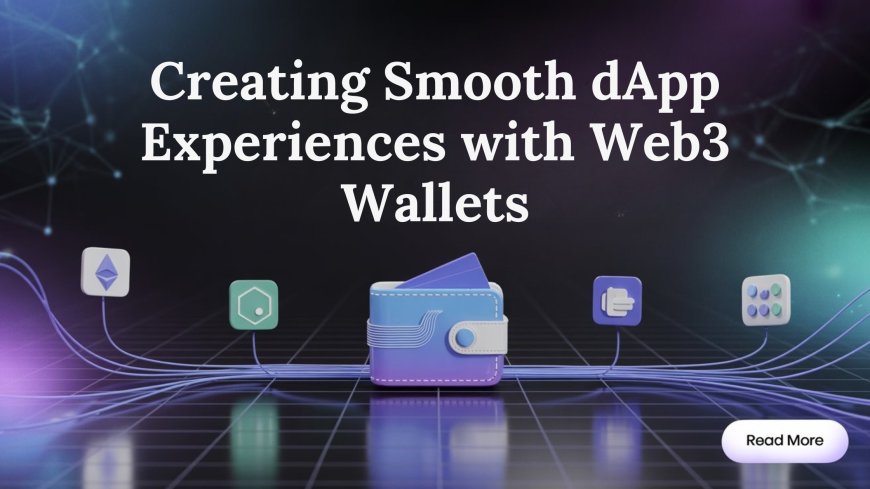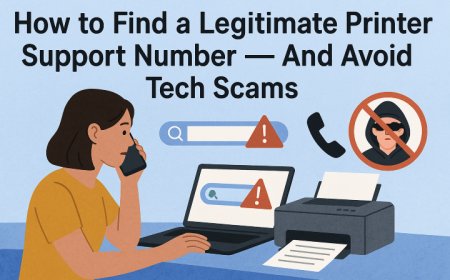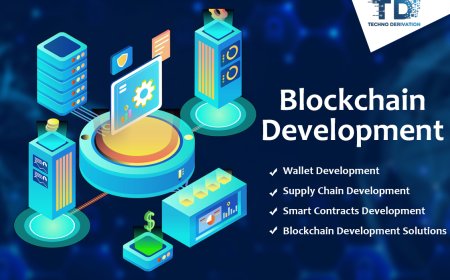Web3 Wallet Integrations: Powering Seamless dApp Experiences
Web3 wallet integrations boost dApp user engagement with smooth logins, secure transactions, and easy asset access. Elevate UX with Innosoft UAE.

As blockchain technology matures, its bringing along a new breed of applications known as decentralized apps, or dApps. Unlike traditional apps that rely on central servers, dApps operate on decentralized networks like Ethereum or Binance Smart Chain. This means no single entity controls them, which opens up powerful possibilities for transparency, security, and user ownership.
But for the average user, diving into the world of decentralized applications still poses one major hurdle: interacting with blockchain networks isnt always as straightforward as using a typical mobile or web app. Thats where Web3 wallets come in, quietly transforming how people connect with the decentralized world.
In this post, lets explore why Web3 wallet integrations are so important for dApps, how theyre reshaping user experiences, and why working with the best dApp development company can make a critical difference when building next-generation blockchain products.
The role of Web3 wallets in dApps
At its core, a Web3 wallet is more than just a digital place to store crypto assets. It acts as a secure gateway between the user and the blockchain. Whether someone wants to swap tokens, vote on governance proposals, buy an NFT, or play a blockchain game, theyll likely do it through their wallet.
Unlike the traditional login systems that rely on usernames and passwords stored on company servers, Web3 wallets let users sign in by cryptographically proving ownership of their wallet address. This approach removes the need for storing sensitive user credentials on third-party servers, dramatically lowering risks like data breaches.
How integrations make or break user journeys
For dApp developers, integrating popular Web3 wallets isnt just a technical checkbox, its central to building trust and offering a friction-free experience.
Imagine landing on a new NFT marketplace. Instead of creating an account with an email and password, a user clicks Connect Wallet, selects MetaMask, WalletConnect, or Coinbase Wallet, and instantly gains access to the platform, with the ability to purchase and trade. They can sign transactions directly in their wallet, review permissions, and maintain control over their funds without ever handing them over to the platform.
A well-executed wallet integration dramatically reduces barriers to entry. Thats why many businesses that work with a dApps development company often prioritize wallet flows right from the start of the project. When done right, it removes long sign-up forms, forgotten passwords, and the need for users to trust the platform with their funds.
Popular Web3 wallets and why support matters
There are hundreds of wallets available, each with different features. However, a few stand out as the go-to choices for most users:
MetaMask: Perhaps the most recognized Web3 wallet, MetaMask is a browser extension and mobile app that supports Ethereum and EVM-compatible chains. It makes connecting to dApps straightforward and is often the default first integration.
WalletConnect: Rather than being a wallet itself, WalletConnect is a protocol that lets dApps connect to a huge array of mobile wallets. Users scan a QR code or click a deep link to connect their phone wallets to a web dApp.
Coinbase Wallet: Separate from the Coinbase exchange app, this wallet provides a secure way to interact directly with dApps and store NFTs or tokens.
Supporting these wallets (and sometimes more specialized ones, like Trust Wallet or hardware wallets) ensures that users arent forced into creating a new wallet just to try out a platform. It respects their existing choices and makes onboarding faster.
Security and transparency in wallet-based interactions
Web3 wallets give users direct custody over their assets, but this also means security is a shared responsibility. When a user connects a wallet, the dApp typically requests certain permissions like seeing the wallet address or asking for transaction approvals.
Thats why good wallet integrations are designed to be transparent. They never ask for unnecessary permissions. For example, a simple voting app shouldnt request access to transfer tokens on behalf of the user. This principle of least privilege builds confidence. Its also a reason why many teams choose to work with a dapp development services provider experienced in designing secure, user-friendly wallet connections.
Equally important is clear communication. Whenever a transaction is about to be signed, the wallet displays exactly what will happen on-chain. This gives users a chance to verify the contract interactions, preventing mistakes or scams.
Custom wallet integrations and brand control
While most dApps integrate popular wallets like MetaMask, some businesses choose to go a step further by offering a branded wallet experience. This might involve building a white-labeled wallet app thats tightly integrated into their platform.
For instance, a blockchain game might launch its own wallet that automatically supports its native tokens and NFTs, making the process smoother for players who might not be crypto-savvy. Collaborating with the best dapp development company can help balance user-friendliness with the flexibility of self-custody.
In such cases, developers might integrate multiple wallet SDKs under the hood, so advanced users can still connect with MetaMask or Ledger, while newcomers have an easy path using the in-house wallet.
Beyond payments: identity, credentials, and loyalty
Wallet integrations arent just about transferring tokens. Increasingly, wallets serve as digital passports for the decentralized internet. A wallet address can hold NFT badges, reputation scores, or even zero-knowledge proofs of credentials.
For example, a decentralized freelance platform might verify that a wallet owns a particular credential NFT before allowing a user to apply for high-value projects. Or a loyalty program might distribute special NFTs to long-term customers, which grant exclusive discounts.
These use cases expand the potential of wallet integrations well beyond simple payments, paving the way for a richer, more personalized dApp ecosystem.
Things developers and businesses should consider
Whether youre building a DeFi protocol, an NFT marketplace, or a DAO voting dashboard, wallet integrations are likely at the heart of your product. Here are a few practical points to keep in mind:
Support multiple wallets: Dont lock users into one wallet provider. By integrating widely-used options, you reduce friction and signal that your platform is open and flexible.
Handle disconnects gracefully: Blockchain networks can be finicky. Users might switch accounts or networks in their wallet. Make sure your dApp detects this and prompts them to reconnect or switch networks smoothly.
Design clear signing flows: Users should always understand what theyre approving. Use human-readable transaction summaries, avoid unnecessary contract calls, and let wallets handle the final signing.
Respect privacy: Only request data thats essential. Dont try to pull wallet balances or token lists unless needed for core features.
Plan for scalability: As your user base grows, you might want to integrate Layer 2 solutions or sidechains. Ensure your wallet integrations can handle different networks.
Many forward-looking projects team up with a decentralized application development company to make sure they get these elements right, reducing costly mistakes down the road.
What about exchanges?
Interestingly, crypto exchanges themselves have started evolving wallet experiences. Some offer hybrid custodial + non-custodial models, letting users withdraw into on-platform wallets that still interact with DeFi protocols. For businesses looking to build a new platform, partnering with a crypto exchange developer who understands wallet infrastructure can be crucial.
Similarly, when setting up new markets or features, teams often look to crypto exchange software development specialists to build integrations that safely handle deposits, trading, and withdrawals, while still allowing wallet-based authentication.
Future of wallet interactions
Looking ahead, wallets are likely to become even more than identity and payment hubs. With growing standards like ERC-4337 (account abstraction), users may get smart contract wallets that automate complex transactions, split payments, or even have social recovery mechanisms without sacrificing decentralization.
Were also seeing more wallet providers experiment with privacy tech, like zero-knowledge proofs, so users can prove something about their holdings or history without revealing full wallet details.
For platforms exploring new ecosystems, collaborating with crypto exchange development services or advanced smart contract architects can help navigate these emerging tools.
Wrapping up
Wallet integrations are quietly doing the heavy lifting to make dApp interactions feel simple, secure, and direct. They replace login forms, protect private keys, enable token swaps and NFT mints, and act as a digital identity layer for the decentralized web.
As more businesses and developers explore blockchain, understanding the nuances of wallet integration isnt optional, its fundamental. Whether youre building a game, a decentralized finance tool, or a loyalty platform, putting thought into how users connect and transact will shape the trust and usability of your entire ecosystem.









































